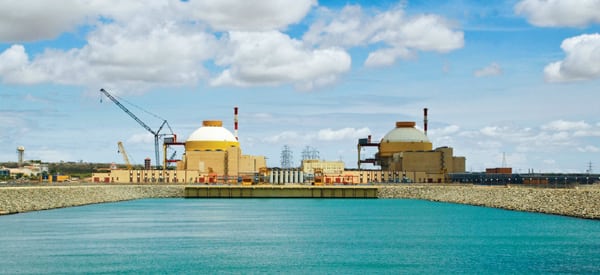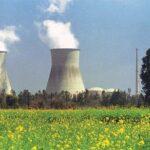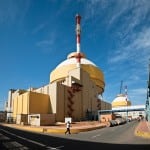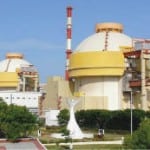Since a landmark 2008 deal that lifted global sanctions and allowed countries to conduct nuclear trade with India, the nation struggling to keep up with domestic power demand has signed deals with the U.S., France, Russia, Canada, Mongolia, Kazakhstan, Argentina, Namibia, and, in August, South Korea, for construction of large nuclear power plants (in technical collaboration with foreign vendors) or for nuclear fuel.
But India is a country that for more than three decades was largely excluded from trade in nuclear plant materials, so it has long been developing a unique nuclear fuel cycle to exploit its massive reserves of thorium to ensure that nuclear power remains part of its power profile. The first step of the three-stage program involves building indigenously engineered pressurized heavy water reactors (PHWRs) and light water reactors to produce plutonium. The second stage uses fast-neutron reactors fueled by plutonium to breed uranium-233 (U-233) from thorium. In the third stage, using wholly indigenous technology, the country will use advanced heavy water reactors fueled with U-233 obtained by the irradiation of thorium in PHWRs and fast reactors.
Staking its future economic prosperity on the success of this program, the country expects to have 20 GW of nuclear capacity online by 2020 (up from the current 4.4 GW) and 63 GW by 2032. And it is making progress. In July, the state-owned Nuclear Power Corp. of India Ltd. poured concrete for two indigenously developed 700-MW PHWRs at the Rajasthan Atomic Power project at Rawatbhata, Rajasthan state. When complete in 2017, as expected, the reactors will join two other 700-MW PHWRs under construction at Kakrapar in Gujarat.
Indian nuclear reactor technologies are on par with international standards, but the foreign agreements were mainly to “facilitate a faster growth” of the nuclear power program, Minister of State for Personnel, Public Grievances and Pensions V. Narayanasamy told Lok Sabha (the lower house of parliament) in July. Deals included one with Russia for two new VVERs in Tamil Nadu, where Atomstroyexport is already building two units (Figure 4), and an agreement for two EPRs—the first of a series of six—at Jaitapur in Maharashtra.
 |
| 4. Pushing ahead. Seeking to alleviate chronic power shortages, India is making strides toward a three-step nuclear power plan, which consists of building several indigenously designed reactors. It has also struck deals with France and Russia for new reactors, though a trade deal with the U.S. has stalled for various reasons. The first of two new Russian-built VVER reactors at the Kudankulam Nuclear Power Plant, shown here, is scheduled to come online in December. Courtesy: Institute Hydroproject |
Conspicuously, no such transactions have taken place between the U.S. and India—even though a civil nuclear agreement, signed with much fanfare in 2005 by President George W. Bush and Prime Minister Manmohan Singh, sought to open up Asia’s third-largest economy’s $150 billion nuclear energy market. In July, it was widely reported that nuclear trade between the two countries had stalled because of politically complicated legislative and regulatory hurdles. One issue that has been repeatedly revisited is that the U.S. wants India to tighten laws shielding equipment makers from liability in case of nuclear accidents.
Industry experts say the lack of trade also stems from India’s waning zeal for nuclear power that has arisen from fervent—and sometimes violent—public opposition to new plants, as with the Jaitapur EPRs. Conditions imposed by India’s parliament also make trade easier with state-owned nuclear entities—as opposed to privately owned firms like General Electric and Westinghouse, Toshiba’s U.S. arm. Among other concerns are that New Delhi has not guarded against technology transfer, as is required by U.S. law.
Finally, before U.S. and French reactors can be built, India must secure a nuclear cooperation deal with Japan because Japan holds the licenses for critical components that make up those reactors. Japan and India have been engaged in negotiations, but the nation recently crippled by the Fukushima crisis has asked India to make a long list of reassurances, which Indian negotiators reportedly find “unrealistic.”
—Sonal Patel is POWER’s senior writer.










